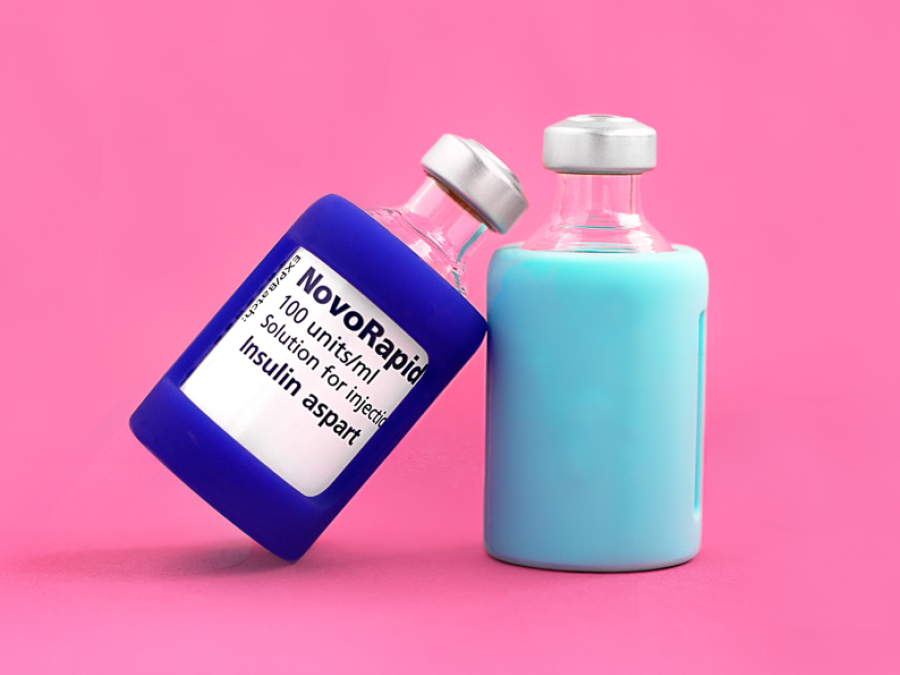What causes lipohypertrophy and how can it be managed?

What causes lipohypertrophy and how can it be managed?
Lipohypertrophy is a common condition for people with diabetes. It can also be easily prevented.
This guide looks at what lipohypertrophy is, what causes it, and how to manage it. We also review some useful tips for preventing it too.
What is lipohypertrophy?
Lipohypertrophy is a commonly seen condition in people who use insulin therapy. Studies report that 64% of people who use insulin therapy have some lipohypertrophy.
Lipohypertrophy is a common insulin site reaction and is usually the result of repeated insulin therapy. It causes visible lumps or swellings which can be soft to firm and ‘rubbery’ to touch.
These lumps are formed because of thickened adipose tissue (the fatty tissue just under the skin) at the injection or infusion site, caused by insulin administration. Lipohypertrophy can be caused by insulin injections and insulin pump therapy.
Symptoms of lipohypertrophy
The first warning signs of lipohypertrophy may be difficult to notice, as the condition appears gradually.
However, the following can be symptoms of lipohypertrophy:
-
Large fluctuations in blood glucose levels depending on the infusion or injection site
-
Frequent, unexplained episodes of hypoglycaemia (hypos)
If you are experiencing these symptoms, insulin injection or infusion sites should always be carefully examined to check for any lipohypertrophy.
The lumps caused by lipohypertrophy look and feel like a ‘rubbery’ swelling at the injection site. They range in size from very small, flat and hardly detectable to larger lesions that may be sticking out and are easily seen.
These swellings are generally painless and shouldn’t hurt to touch. You can move them around, but you can’t pinch them together, and there is no discolouration on the skin.
Lipohypertrophy can stop your body from absorbing insulin properly and impair glycaemic management. The thick tissue caused by the condition causes insulin to be absorbed slower and in an unpredictable way. In turn, this could cause difficult blood glucose management, which can lead to further complications.
What causes lipohypertrophy?
The most common risk factor for lipohypertrophy is reusing the same injection site and not letting areas heal fully.
Often, people with diabetes will continue to reuse the same injection site that is less painful and most convenient for them, such as the abdomen. This is okay, however failing to rotate your insulin administration site in these areas can cause lipohypertrophy.
Furthermore, once the injection site develops lipohypertrophy, some people may be more tempted to use it, as the area becomes less sensitive to pain.
The exact mechanism that causes lipohypertrophy remains unclear. However, it is thought that these lumps may be due to the effect of insulin on fat — insulin increases the production of fat. Trauma to the tissue caused by repeated injections may also cause the tissue to thicken.
Although lipohypertrophy is more common in people who take multiple daily injections (MDI), it is also found to be the most common skin complication for people who use insulin pump therapy.
Risk factors for lipohypertrophy
Other risk factors for lipohypertrophy include:
-
Repeated reuse of the same needle
-
Frequency of daily injections
-
Taking insulin therapy for a long time
-
Improper injection technique
-
Length of needle
-
Hypoglycaemia
-
High haemoglobin A1c
-
High body mass index (BMI)
Prevention: how to avoid lipohypertrophy
There is no specific treatment for lipohypertrophy yet. The best management of lipohypertrophy is prevention.
Here are some best practises you can follow for insulin administration to help prevent lipohypertrophy:
-
Change injection or infusion sites each time. This is also known as ‘rotating’ sites. Correct site rotation is defined as administering injections at least 1 cm apart on the chosen areas of your body.
-
Check your insulin sites regularly. Your healthcare team should regularly check for lipohypertrophy as part of a yearly check-up. They will do this by feeling your infusion or injection sites. You can also check regularly for lumps and swellings yourself by examining the sites you use and it is encouraged that you do this between check-ups.
-
Try to follow a pattern of site rotation to allow enough time for the tissue to heal. For example, if you choose the abdomen as your injection site, you can use the left side of the abdomen for 12 days (with each site 1 cm apart), then the right side for another 12 days, giving each individual spot 24 days to ‘heal’.
-
Use a fresh needle if you are administering insulin. A new, sharp needle causes the least damage to the tissue and will minimise pain and trauma to the body. Insulin needles are disposable products and should be safely disposed of after use.
Lipohypertrophy treatment
There is no specific treatment for lipohypertrophy yet, but the condition can be prevented and managed. Basic treatment can involve relieving the affected area.
Taking the following steps may help to reduce the size of lipohypertrophy swellings over time:
-
Do not administer any more insulin at the affected site
-
Practice rotation of the injection site
-
Make sure you administer insulin injections correctly
- Give plenty of time for skin to heal, it is recommended you leave the affected area for 2-3 months.
Your healthcare team will be able to show you the correct way to administer insulin during treatment.
In rare and very advanced cases, surgery may be necessary to remove the affected tissue.
Lipohypertrophy: a summary
Lipohypertrophy is a common complication of using insulin therapy. The most common risk factor for lipohypertrophy is reusing the same site for insulin administration, whether that is through injection or infusion.
Lipohypertrophy is painless but does interfere with the body’s ability to absorb insulin from the insulin administration, which can impair blood glucose management — people with diabetes who have insulin therapy should resist the temptation to continue using the affected areas, let them heal and rotate administration sites.
As lipohypertrophy is associated with a lack of site rotation, rotating your injection or infusion site frequently will help to prevent lipohypertrophy. To reduce the size of swellings over time, avoiding the affected area and letting it heal by itself can help.
Sources
- Kalra S, Jawad F. Lipohypertrophy. J Pak Med Assoc. 2016 Jun; 66(6):779-80. PMID: 27339591
https://pubmed.ncbi.nlm.nih.gov/27339591/ - Xu XH, Carvalho V, Wang XH, Qiu SH, Sun ZL. Lipohypertrophy: prevalence, clinical consequence, and pathogenesis. Chin Med J (Engl). 2020; 134(1):47-49. Published 2020 Aug 17. doi:10.1097/CM9.0000000000000970 https://www.ncbi.nlm.nih.gov/pmc/articles/PMC7862817/
- Kostrzewa-Zabłocka E, Karczewska A. Correct insulin injection: The role of appropriate equipment in lipohypertrophy prevention. Praktyka pielęgniarska i położnicza (ICNP). 2/2018 http://htl-strefa.com/wp-content/uploads/2018/10/The-role-of-appropriate-equipment-in-lipohypertrophy-prevention_10.2018.pdf
- Deeb, Asma et al. Impact of Insulin Injection and Infusion Routines on Lipohypertrophy and Glycemic Control in Children and Adults with Diabetes. Diabetes therapy: research, treatment and education of diabetes and related disorders vol. 10,1. 2019: 259-267. doi:10.1007/s13300-018-0561-7
https://www.ncbi.nlm.nih.gov/pmc/articles/PMC6349294/ - Association of Diabetes Care & Education Specialists (ADCES), Pro Tips (and Tricks) for Easier and Better Insulin Injections, Accessed May 10, 2022. Available at: https://www.diabeteseducator.org/docs/default-source/living-with-diabetes/tip-sheets/insulin-injections/insulin_injection_pro_tips_aade.pdf?sfvrsn=6




